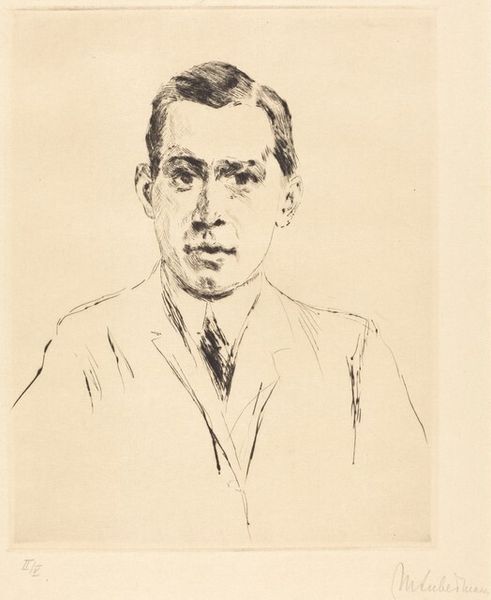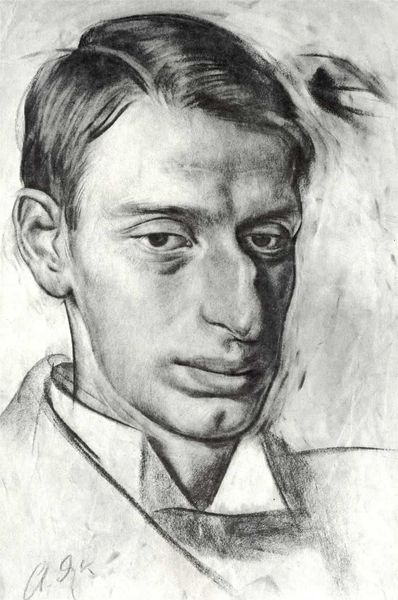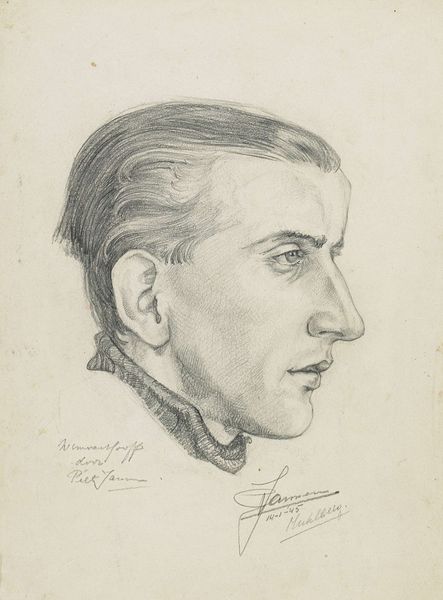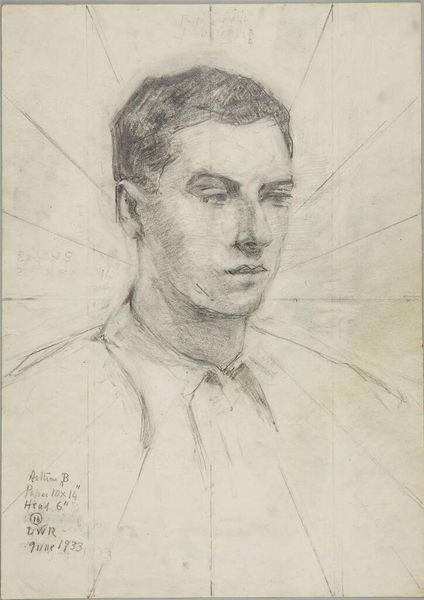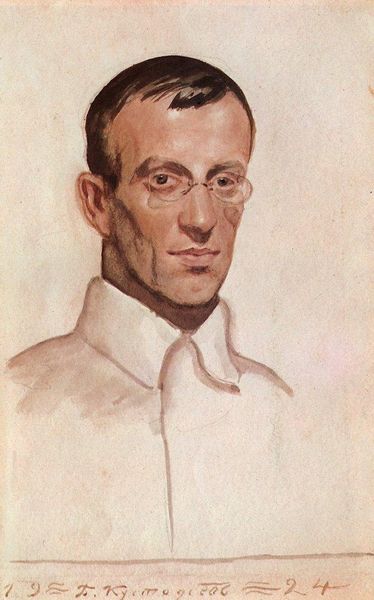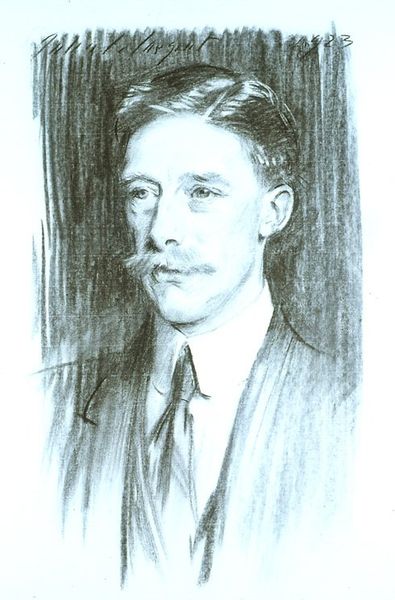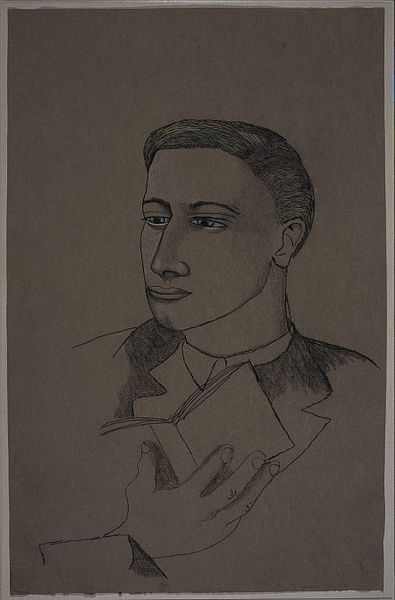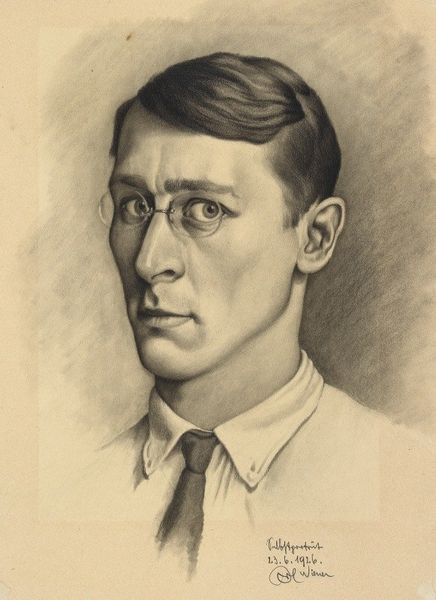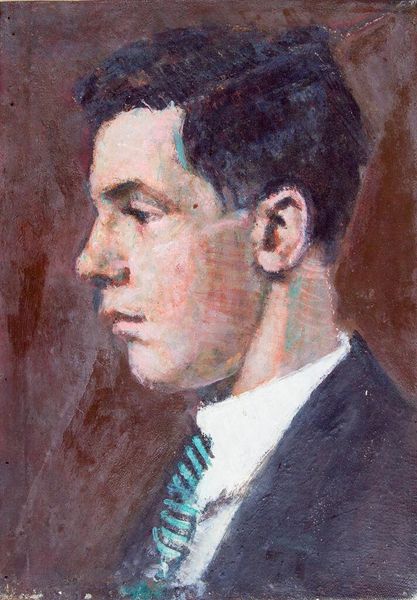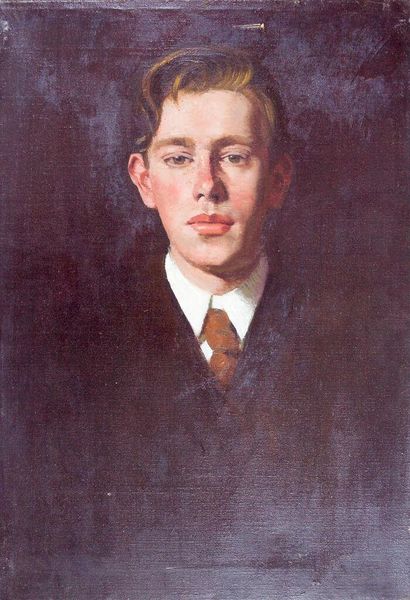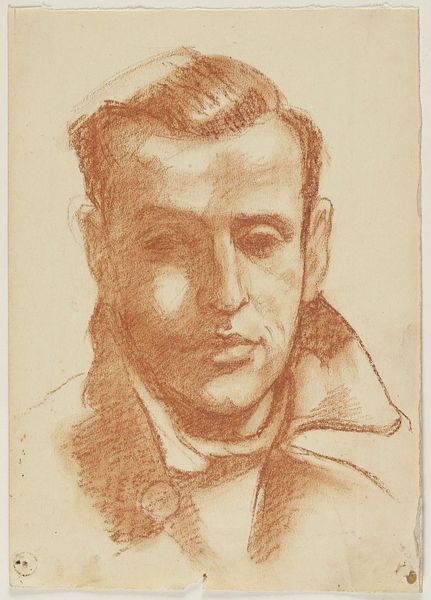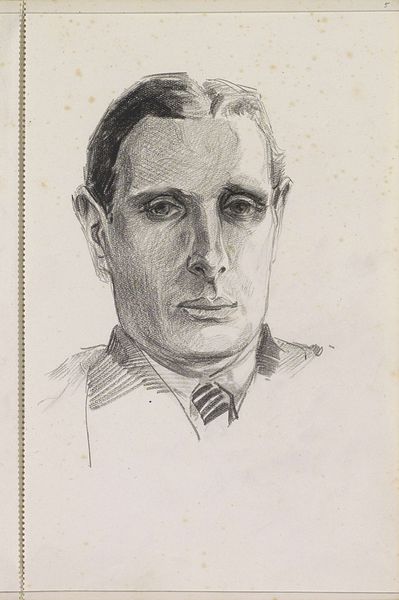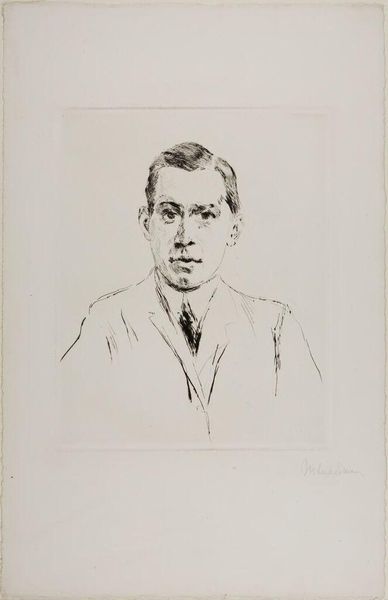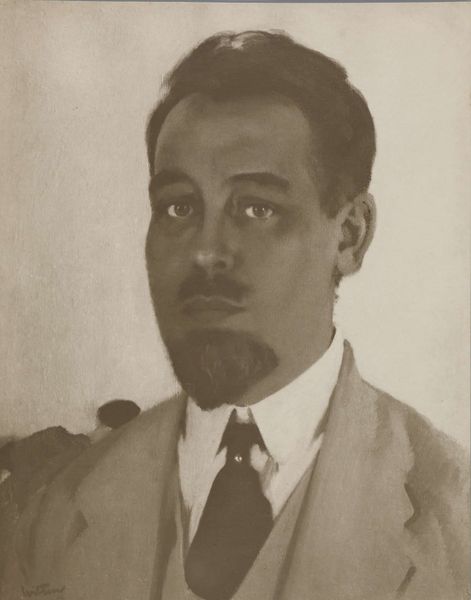
drawing, pencil
#
portrait
#
drawing
#
cubism
#
facial expression drawing
#
head
#
face
#
portrait image
#
portrait
#
figuration
#
male portrait
#
portrait reference
#
male-portraits
#
portrait head and shoulder
#
sketch
#
pencil
#
line
#
nose
#
portrait drawing
#
facial study
#
facial portrait
#
forehead
#
modernism
#
digital portrait
Copyright: Public domain US
Curator: Picasso rendered this pencil drawing, titled "Portrait of Léonide Massine," in 1919. It’s a fascinating image from his neoclassical period. Editor: The eyes are so striking! Large, almost luminous. There's an immediate sense of gravity and an intense gaze. Curator: Indeed. Let's consider the context. Massine was a principal dancer with the Ballets Russes, a company deeply enmeshed in avant-garde circles of the time, representing an artistic disruption, experimenting with gender roles and collaborative art forms. To portray Massine was to align with this experimental artistic network. Editor: Ballet also has its own rich symbolic language, steeped in gesture, movement, and narrative. Is Picasso trying to capture something of Massine's role as a dancer through this representation? I see almost a mask-like quality, enhancing his performative role. Curator: Potentially. Although less known than his Cubist works, these portrait drawings allowed Picasso to explore classical modes of representation but infused with a modernist sensibility. Consider the simplification of form, the almost exaggerated, but also precise lines around the face... Editor: Those lines almost have a sculptural quality, and they do direct your eye. Picasso certainly captured something compelling about Massine—an almost Romantic sensibility underlying the formal composition. But is it only the dancer? Is he trying to convey a symbolic story? Curator: Picasso was interested in how representation operates within specific social spheres. By rendering Massine, he explores ideas of artistic partnership and avant-garde identity—themes pertinent to the societal shifts after World War I, including challenging expectations about beauty. Editor: Thank you, it offers much more layered appreciation, a symbol of artistic exploration of human figure with a unique twist! Curator: Exactly. Placing Massine within the narratives of early 20th-century performance offers insights to understand his influence in the contemporary art scene.
Comments
No comments
Be the first to comment and join the conversation on the ultimate creative platform.
